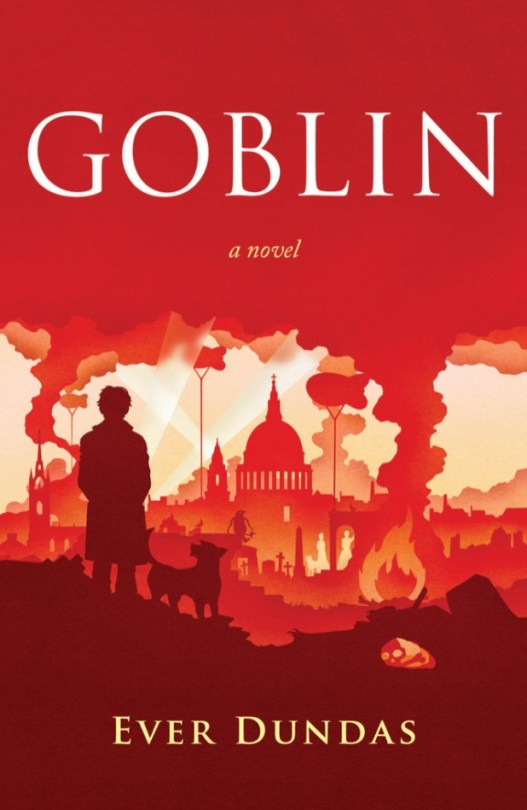Book Review: Goblin by Ever Dundas

Cover artwork by Cinnamon Curtis
An often dark novel with a non-linear timeline and an unreliable (and thoroughly bizarre) protagonist, this book could so easily have been a confusing, unreadable mess – but instead it is compelling, moving and strangely ‘real’. The portrayal of wartime London is evocative and raw and the author’s grasp on the mind of a young child remarkably authentic – a tough trick to pull off. Whilst it is far from being a piece of kitchen-sink realism it can be read in a more realist sense as an exercise in subterfuge, in shielding from the horror of reality through the escape into fantasy or as a literal ‘other’ world co-existing with our own, unseen. The story traverses a weird and wonderful collection of places, characters and themes including gender, sexuality, outsider status, the meaning of family and the treatment of animals. Indeed the book is teeming with fantastic beasties and creatures both recognisable and fantastical.
It is a vividly drawn, frequently sad and at times completely gut wrenching story of loss, abandonment and cruelty – but it is also strangely life affirming and I would hesitate to call it bleak despite so much of the subject matter being so. Goblin herself is a hugely entertaining character and there is a great deal of humour and ‘joie de vivre’ to be found amongst the rubble. The plot is engaging but really it is the characters who drive this novel and they will stay with you long after they have left the story themselves, or indeed after you close the book.
When you get to the end you will want to start all over again..